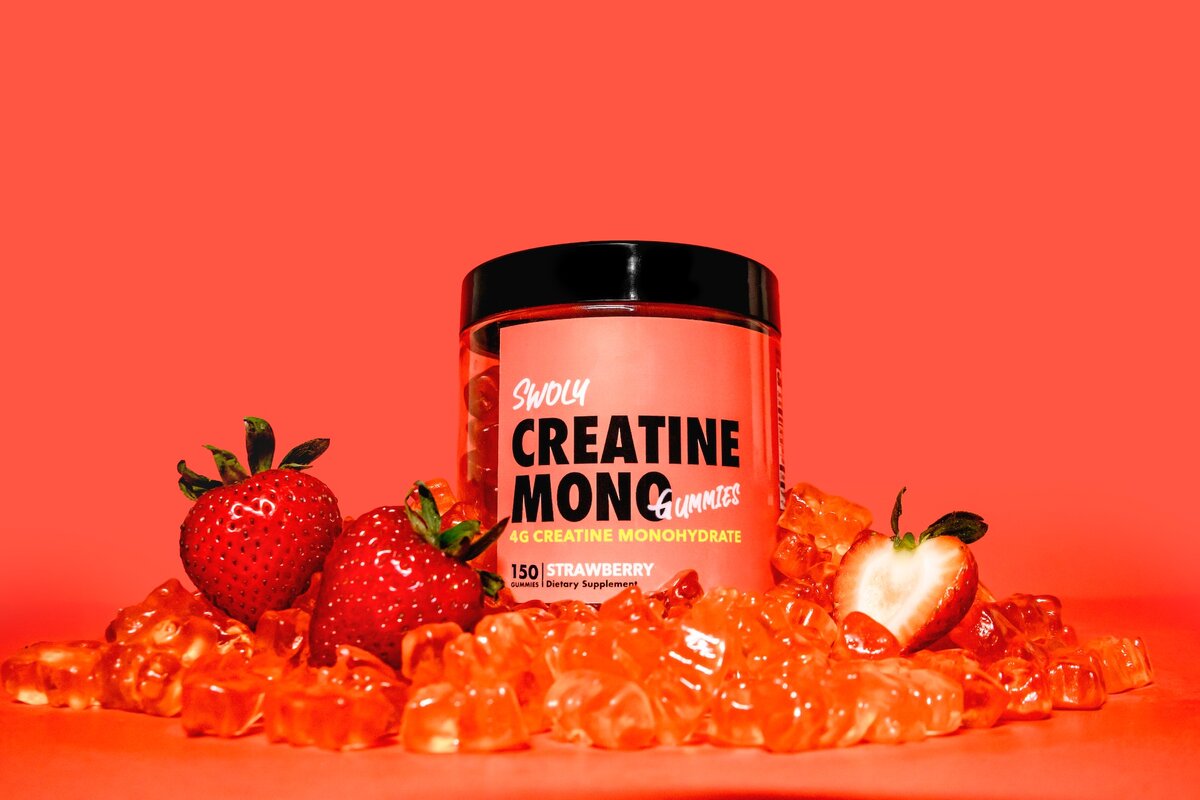If you’ve ever winced at the sharp, somewhat fishy taste of creatine, you’re not alone. Many fitness enthusiasts face the same challenge: how to enjoy the muscle-boosting benefits of creatine without the off-putting flavor. As a popular supplement known for improving strength and athletic performance, it’s a hurdle worth overcoming. But why does creatine taste so bitter, and what can you do about it? Stay tuned as we delve into practical solutions on how to make creatine taste better, enhancing your supplementation experience.
On this page:
Does Creatine Taste Bad? Unraveling the Myth
If you’ve ever had pure creatine monohydrate, you might be familiar with its somewhat bitter and chalky flavor. This unappealing taste is due to the natural composition of the amino acids that form creatine.
Creatine is a combination of three different amino acids: glycine, arginine, and methionine. While these components are excellent for your muscles, they don’t necessarily please the palate. The bitterness is particularly due to the methionine, an amino acid that has a sulfur atom which can create a slightly sour or metallic aftertaste.
Moreover, the texture of creatine powder can also influence how it tastes. Creatine monohydrate doesn’t dissolve entirely in water, which can leave a gritty sensation in your mouth. This undissolved creatine can settle quickly at the bottom of your glass, which makes the last few sips especially unappetizing.

Understanding the inherent flavor of creatine can help you find effective ways to mask it. With some knowledge and creativity, it’s possible to turn your creatine dose into a more enjoyable experience. The key is to combine it with the right ingredients that can overpower the bitterness and improve the overall taste. Plus, when you know what to expect from the raw product, you’re less likely to be caught off guard by that first bitter sip and more prepared to make it taste better.
How to Make Creatine Taste Better with Creative Mixes
Water might be the go-to mixer for many, but it doesn’t do much to mask the inherently bland or slightly unpleasant taste of creatine. Instead, consider mixing your creatine powder with a fruit juice that you enjoy. Citrus juices like orange or grapefruit not only add a tangy zest that can overpower the taste of creatine, but they also contain natural sugars that can help with the absorption of creatine into the muscles.
If you’re not a fan of citrus or are watching your sugar intake, other fruity options like cranberry or pomegranate juice can be equally effective. These juices are typically tart, which can help to disguise the taste of creatine, and they’re also rich in antioxidants. For those who are mindful of their diet, low-calorie or sugar-free versions of these juices are available and can be a smart choice.
For a creamier texture, try mixing your creatine with almond milk, coconut milk, or a dairy milk of your choice. The thicker consistency and the natural sweetness of these liquids can make the creatine powder more palatable. Plus, if you blend it with a bit of ice, it can take on the quality of a smoothie or shake, making it feel more like a treat than a supplement.
Some people also find success mixing creatine with their morning coffee or tea. The robust flavors of these beverages can effectively mask the creatine taste, and as a bonus, you get to combine your supplement intake with your daily caffeine fix. However, it’s important to note that caffeine might interfere with creatine absorption, so this combination might not be the best for everyone.
In essence, when you’re figuring out how to make creatine taste better, think beyond water.
Flavorful Fusion: Incorporating Creatine into Delicious Recipes
Transforming your creatine routine from a chore into a culinary delight is easier than you might think. Instead of simply mixing the powder with water, consider incorporating creatine into your meals. This not only masks the taste but also turns your supplement intake into a more enjoyable experience.
One of the simplest ways to infuse creatine into your diet is by adding it to your morning oatmeal or smoothie bowl. The natural flavors of fruits, nuts, and seeds can overshadow the bland or slightly bitter taste of creatine. Just a scoop blended into your oat mixture or smoothie ingredients can do the trick, ensuring you start your day with a nutrient-rich meal and your necessary creatine boost.
Another great option is baking. Creatine powder can be mixed into pancake batter, waffles, or muffin recipes without affecting the texture or taste. When heated, the creatine remains stable, so you don’t lose the benefits while enjoying a warm, freshly baked treat. Just make sure to stick to the recommended daily dosage and distribute it evenly across the servings.
For those who enjoy a savory approach, creatine can also be stirred into soups or sauces. It dissolves well in broths and can be seamlessly integrated into the flavor profile of your favorite recipes, from creamy tomato soups to protein-packed chili dishes. Robust flavors from herbs and spices in these dishes will make the presence of creatine virtually undetectable.
The key to incorporating creatine into recipes is ensuring that it doesn’t overpower the dish. Start with small amounts and gradually increase to find the right balance that suits your palate.
The Scoop on Flavored vs. Unflavored Creatine Supplements
Flavored creatine powders are designed to offer a more pleasant taste experience right out of the tub. These varieties come in a range of flavors, from fruit punch to blue raspberry, and are often sweetened to mask the natural bitterness of creatine. The advantage is clear—you get a supplement that’s ready to drink with just water, and it’s generally more enjoyable to consume. However, the added flavors and sweeteners can sometimes lead to extra calories or unwanted ingredients in your diet.

Unflavored creatine, on the other hand, is exactly what it sounds like: pure, without added taste enhancers. It’s the more versatile option, as it can be mixed into any beverage or recipe without altering the intended flavor. This is ideal if you’re closely monitoring your dietary intake or if you prefer to customize your own flavor profiles using natural ingredients, like fruit juices or smoothies. The trade-off? You’ll need to be more creative in masking the bitter taste of the raw powder.
The choice between flavored and unflavored creatine comes down to personal preference and how to make creatine taste better for your goals. If convenience and immediate palatability are your priorities, flavored creatine is the go-to. But if you’re looking for purity and flexibility, unflavored creatine is your best bet. Consider your dietary needs, taste preferences, and how you plan to incorporate creatine into your meals or snacks when making your decision.
Expert Tips for a Palatable Creatine Experience
To make your creatine consumption a more enjoyable experience, experts have a few tricks up their sleeves. The key is to blend it seamlessly with the right companions. First, consider the temperature of the liquid you’re mixing your creatine with. Cold beverages can diminish the strength of the creatine’s taste. So, try stirring your creatine into an icy smoothie or a chilled fruit juice for a refreshing twist.
Next, timing is crucial. Drinking creatine during or after a meal can help mask its flavor because your taste buds are already engaged with the flavors of your food. This means the creatine’s taste becomes a background note rather than the main flavor.
Also, the mixer you choose can make a big difference. Strongly flavored liquids like lemonade or orange juice are excellent at overpowering creatine’s bitterness. If you prefer something less sweet, almond milk or coconut water are subtle yet effective options.
For those who are particularly sensitive to taste, a flavorless creatine powder is a godsend. These powders can be added to just about anything without altering the taste. Stir it into your morning oatmeal, a hearty soup, or your go-to protein shake.
Lastly, consistency matters. The finer the powder, the better it will dissolve, and the less likely you’ll be to notice any grittiness or residual flavor. Always check the micronization level of the creatine you buy; the higher the grade, the finer the powder.
Taste of Creatine: Your Top Questions Answered
Why does creatine taste bad?
Creatine naturally has a somewhat bland or slightly bitter taste because it's a derivative of amino acids. The raw, unflavored powder doesn't include sweeteners or flavorings that could make it more palatable.
Can I make creatine taste better without adding calories?
Yes, you can improve creatine's taste without a significant calorie increase by mixing it with calorie-free flavored water enhancers, seltzer, or by adding a squeeze of lemon or lime.
Is it okay to mix creatine with hot beverages?
Mixing creatine with hot beverages isn't recommended. Heat can degrade creatine's effectiveness, so it's best to mix it with cold or room temperature liquids.
Does the form of creatine change the taste?
Yes, different forms of creatine, like creatine monohydrate or creatine ethyl ester, may have slightly different tastes. Micronized versions may be less gritty and have a milder flavor.
Will mixing creatine with juice mask the taste?
Mixing creatine with juice is a common way to mask the taste. The natural sweetness and flavors from the juice can make the creatine more enjoyable to consume.
How long after mixing should I wait to drink creatine?
You should drink your creatine mix soon after preparing it, as it can settle at the bottom of your cup if left to sit. Waiting too long could also affect the potency of the creatine.
Transforming Creatine from Bitter to Better
It’s clear that the journey on how to make creatine taste better is well within your reach. By exploring creative mixes and delicious recipes, you can easily mask the bitterness and transform your supplement routine into a more palatable experience. Whether you choose flavored or unflavored creatine, the key is to blend it in a way that suits your taste buds. With the expert tips we’ve shared, you’re now equipped to enjoy the benefits of creatine without the unpleasant taste. Let these strategies guide you towards a more enjoyable and sustainable path to meeting your fitness and health goals.



